Paper vs. Mesh Sanding Discs: Which Should You Buy?
Choosing the right abrasive disc is essential for efficient and effective sanding. Two primary types dominate the market: traditional paper-backed discs and modern mesh sanding discs. Deciding between them impacts performance, dust control, and project outcomes.
The choice between paper and mesh sanding discs depends heavily on the material being sanded and the desired outcome. Paper discs, available in a wide range of materials and backings, offer versatility and consistent performance for general-purpose sanding on wood, metal, and painted surfaces, providing robust support for various grits. Mesh discs excel at dust extraction due to their open structure, preventing clogging and extending disc life, particularly when sanding materials that produce excessive dust, like drywall compound or wood fillers, or when paired with sanders featuring active dust collection systems.
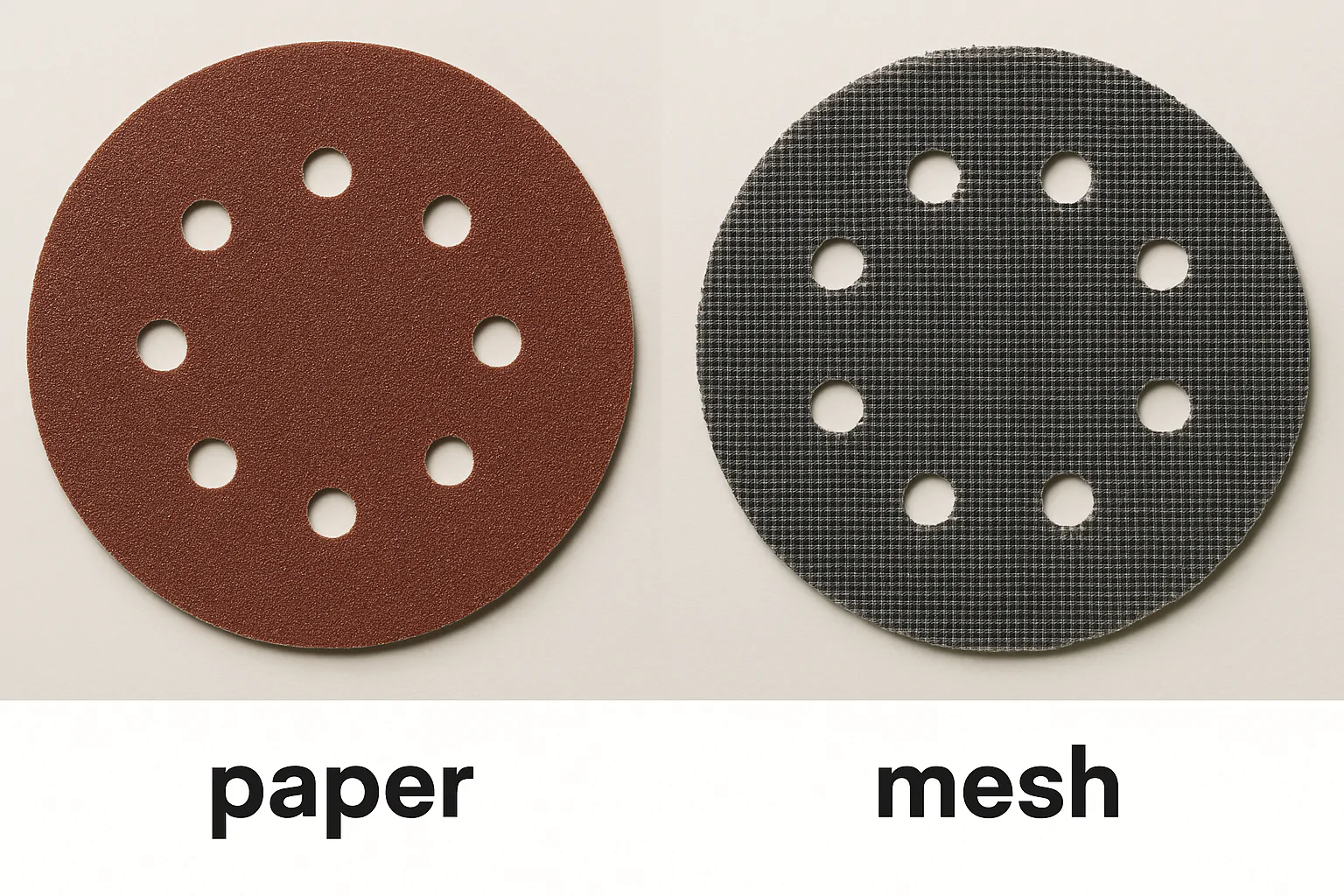
Comparing the structure of paper and mesh sanding discs.
Understanding their key differences helps you make the smart purchase for your specific needs.
Is sanding mesh better than sandpaper?
It’s often debated whether the newer mesh technology surpasses traditional sandpaper. Is sanding mesh truly better, or does it depend on the situation?
Sanding mesh (sanding screen) is not definitively "better" than sandpaper; it offers specific advantages that make it superior in certain applications, primarily related to dust control and longevity when sanding materials that clog traditional abrasives easily. Sandpaper, with its solid backing, provides consistent abrasive contact and is often preferred for general material removal, achieving very fine finishes, and working on harder surfaces, offering a balance of performance and cost-effectiveness across a wider range of tasks.
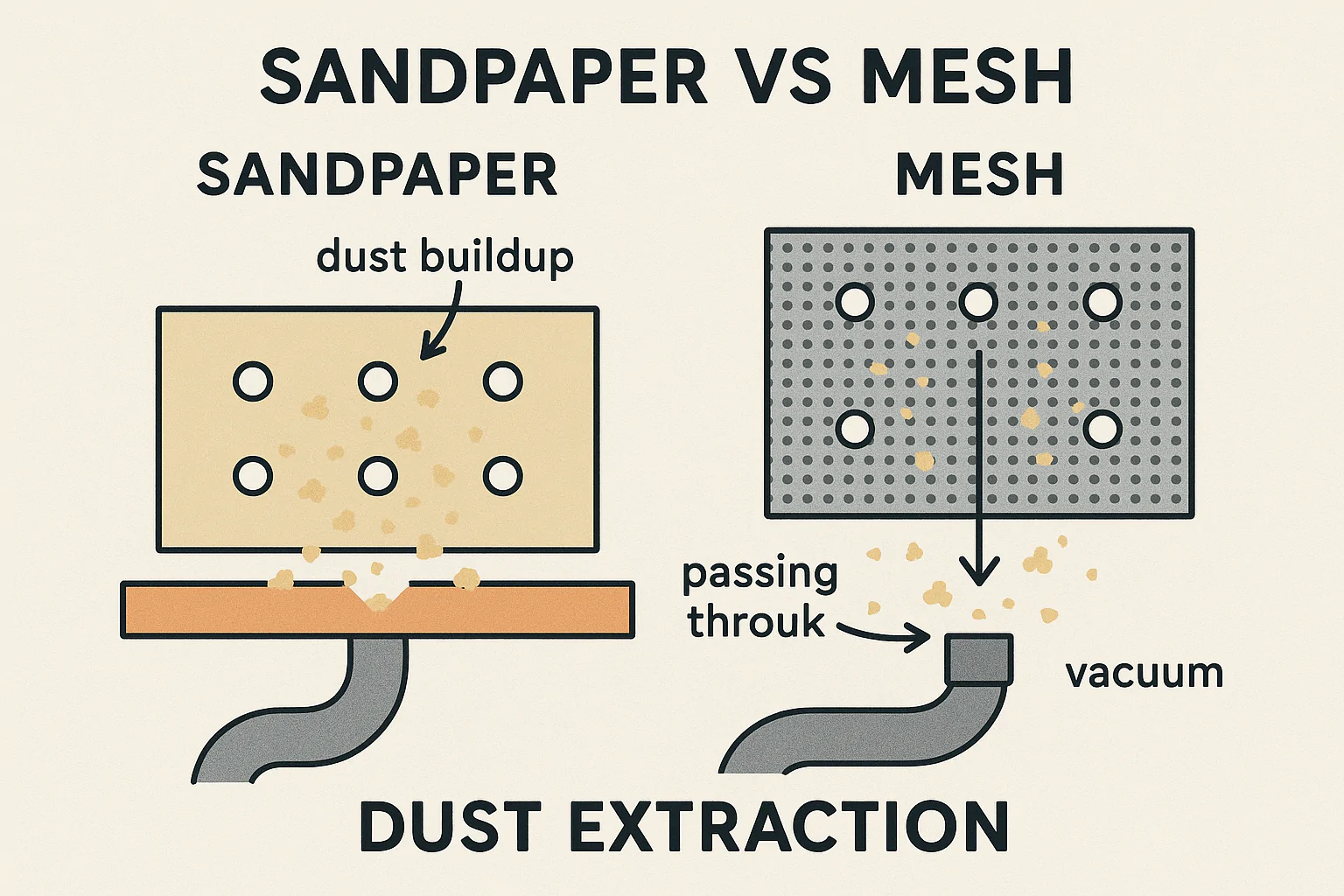
Dust management differences between sandpaper and mesh.
The key benefit of sanding mesh lies in its open structure. When you sand, the dust generated has a pathway directly through the mesh. This prevents the dust from loading up between the abrasive grains on the surface of the disc, which is the main reason sandpaper stops cutting effectively. For materials like drywall joint compound, plaster, or wood filler, which produce fine, powdery dust that quickly clogs sandpaper, mesh is a game-changer. It allows you to sand for much longer without the abrasive becoming ineffective, saving time and reducing the number of discs needed. When used with a sander that has a dust collection system (either passive holes or active vacuum attachment), mesh discs are incredibly efficient at removing dust from the work surface and the air, leading to a cleaner working environment and better finish visibility. However, the solid backing of traditional sandpaper provides more rigid support for the abrasive grains. This can translate to more aggressive cutting power for initial material removal on harder woods or metals. Also, for achieving very fine finishes (think grits 400 and above), the consistent, flat surface provided by a paper or cloth backing can sometimes yield a more uniform scratch pattern than the slightly less rigid mesh structure. So, mesh is better for dust-prone applications and with dust collection, while sandpaper is a reliable all-rounder for general sanding and can sometimes be superior for aggressive cutting or very fine finishing. Quality abrasives are available in both formats; for example, NOVOGRIT offers both paper and mesh discs to cater to different needs.
Are mesh sanding discs any good?
Given their different structure, do mesh sanding discs perform well in actual use? Are they effective for common sanding tasks?
Yes, mesh sanding discs are very good, particularly excelling in applications where dust clogging is a significant issue or when used with sanders equipped with dust extraction. Their open structure allows dust to pass through, maintaining cutting efficiency and extending disc life significantly compared to traditional paper discs on materials like drywall, fillers, and certain paints. They provide effective material removal and can achieve excellent finishes, making them a valuable addition to a woodworker’s or painter’s abrasive arsenal.
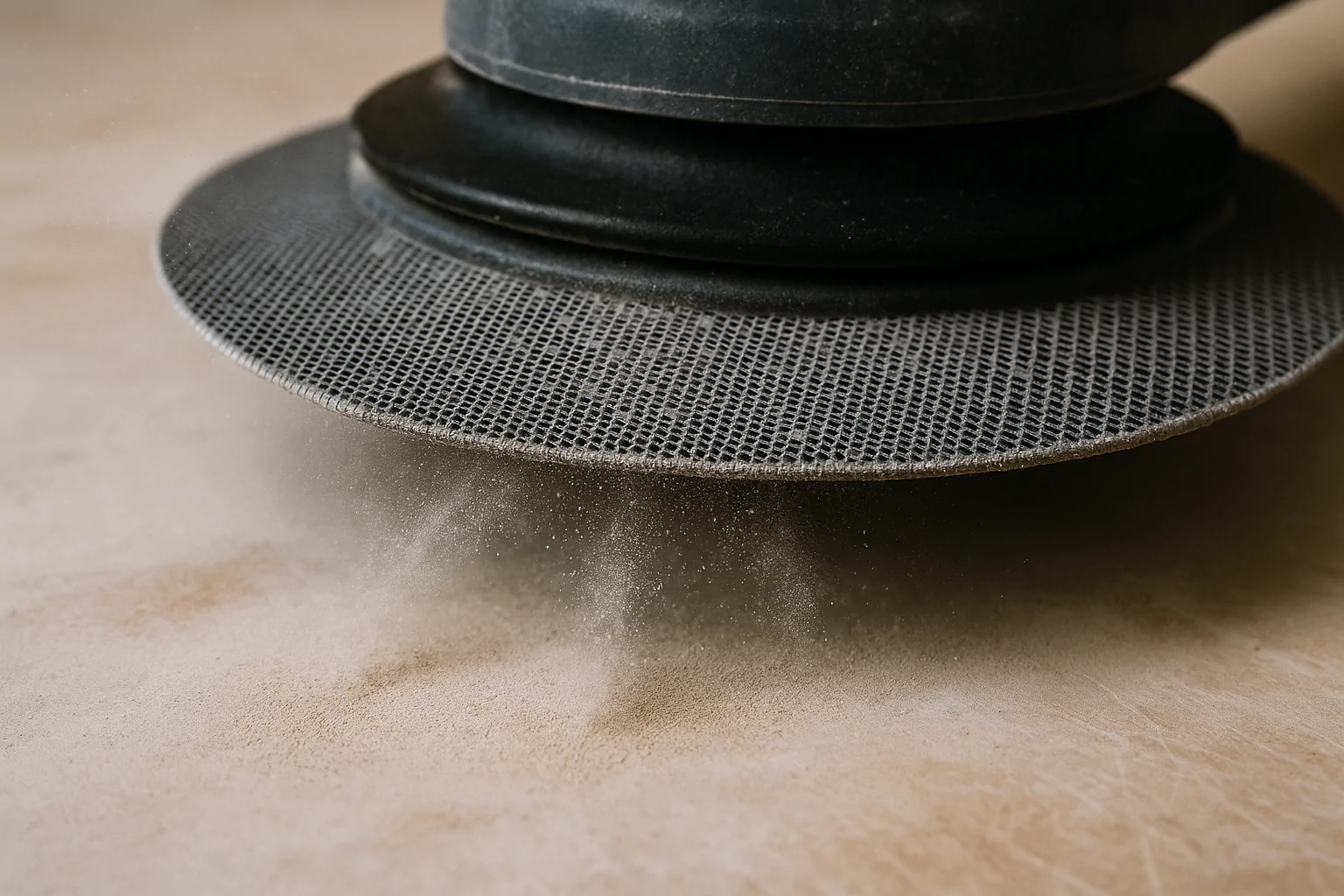
Effective dust removal with a mesh sanding disc.
My personal experience, and that of many professionals I know, confirms that mesh sanding discs are not just a gimmick; they are genuinely effective tools. When I first tried them for sanding drywall compound, I was amazed at how much longer a single disc lasted compared to a paper one. The constant fight against clogged sandpaper was significantly reduced. They work very well on orbital sanders that have base plates designed with numerous holes for dust extraction – the dust gets pulled straight through the mesh and the holes. Even on sanders with fewer holes, the mesh itself allows a good amount of dust to fall away, rather than packing onto the abrasive surface. For woodworking, especially when sanding softwoods or materials like MDF or particleboard that create fine dust, mesh discs maintain their cutting power for longer. They are available in a range of grits, from coarse to very fine, meaning you can often complete an entire sanding process, from shaping to final smoothing, using only mesh discs. While some might argue that a traditional paper disc feels slightly more aggressive at the very beginning of its life, the ability of the mesh disc to maintain its cutting edge over a longer period often makes it more efficient overall, especially on materials that produce a lot of dust. High-quality mesh discs, like those from NOVOGRIT, are constructed with durable mesh backings and premium abrasive grains to ensure both longevity and consistent performance.
What is the best material for sandpaper?
When considering the abrasive itself, what materials are commonly used, and which is considered the "best" for different applications?
The "best" abrasive material for sandpaper depends on the application, workpiece material, and desired finish. Common abrasive materials include Aluminum Oxide (versatile, good for wood, metal, paint), Silicon Carbide (very sharp, good for finishing, wet sanding, non-ferrous metals), Zirconia Alumina (durable, good for aggressive grinding on metals and hardwoods), and Ceramic Alumina (highly durable, excellent for power sanding, metals, hardwoods, and high-pressure applications). Aluminum Oxide is the most common and cost-effective for general use, while Zirconia and Ceramic are preferred for heavier tasks.
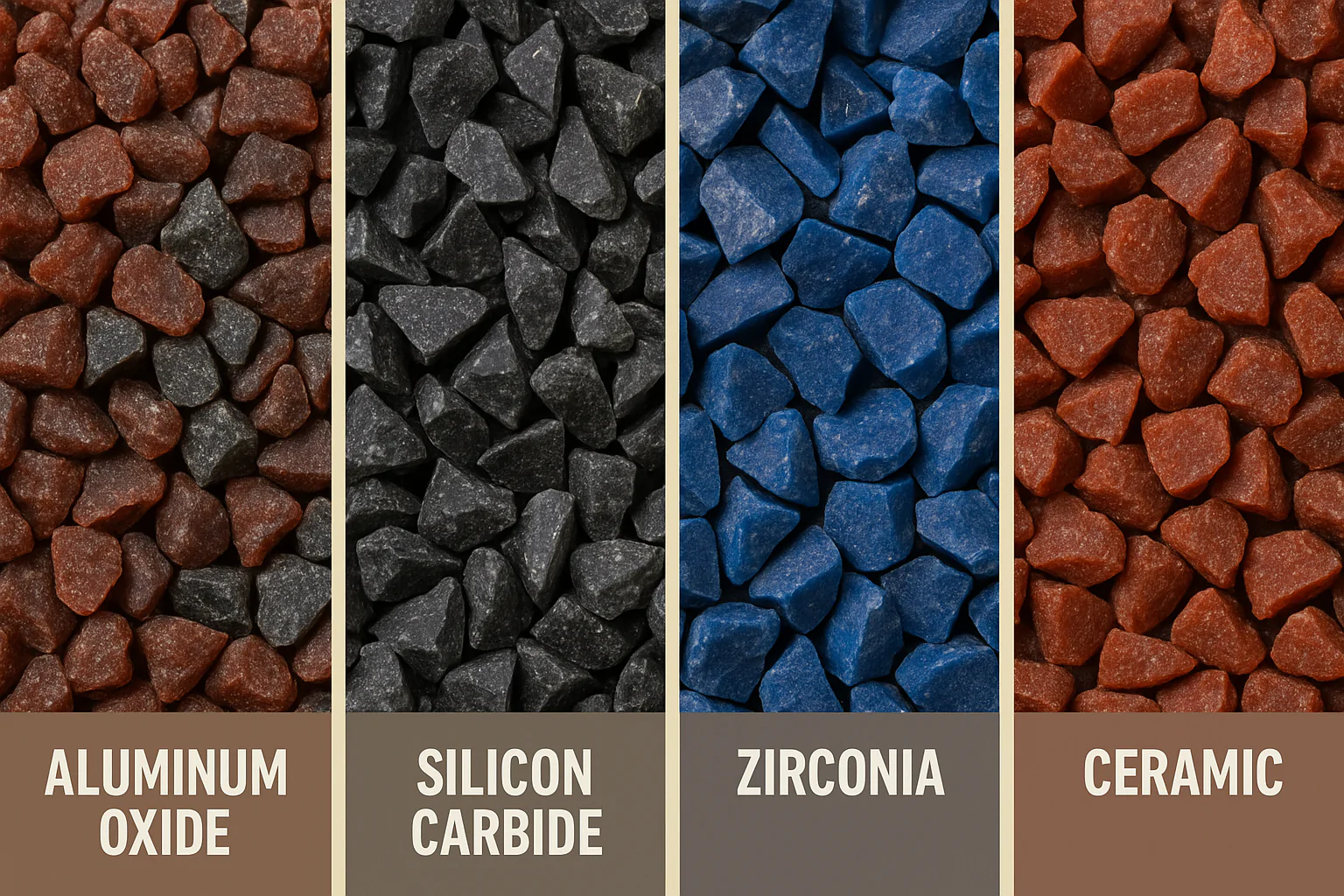
Different types of abrasive grains used in sandpaper.
Let’s break down the common abrasive materials you’ll find on sandpaper and sanding discs. Aluminum Oxide is the most common and is often reddish-brown. It’s a tough, durable grain that fractures during use to expose new cutting edges, making it versatile for sanding wood, metals, plastics, and removing paint. It’s a great all-around choice. Silicon Carbide is black and very hard and sharp. Unlike aluminum oxide, its grains tend to break down more rapidly, but they provide a very sharp cut initially. This makes it excellent for sanding paint, plastics, and non-ferrous metals (like aluminum or brass), and it’s the preferred abrasive for wet sanding because it resists dulling in water. It’s also used for achieving very fine finishes. Zirconia Alumina (often appears blue or green) is a tougher, more durable grain than aluminum oxide. It is designed to self-sharpen under pressure, making it ideal for more aggressive stock removal on hardwoods, metals, and fiberglass, especially with power tools. It lasts longer than aluminum oxide in heavy-duty applications. Ceramic Alumina (often reddish-brown like aluminum oxide, but with a distinctive ceramic structure) is the most advanced and durable abrasive grain. Like zirconia, it excels in heavy-duty applications, particularly with power tools where heat and pressure are high. It offers the longest life and fastest cut rate on hardwoods, metals, and other tough materials. For general woodworking and many DIY tasks, aluminum oxide is usually sufficient. For more demanding tasks or with power sanders, stepping up to zirconia or ceramic (often found in premium products like some of NOVOGRIT’s offerings) provides significant benefits in terms of speed and longevity.
What is the difference between grit and mesh sandpaper?
The terms "grit" and "mesh" describe different aspects of an abrasive product. How should we understand the difference?
Grit refers to the size of the individual abrasive particles on the sandpaper or mesh disc, indicating how coarse or fine the abrasive is (lower numbers mean coarser grit, higher numbers mean finer grit). Mesh refers to the backing material of the abrasive product itself – specifically, a woven or screened structure that allows dust to pass through, as opposed to a solid paper or cloth backing. Grit describes the cutting performance, while mesh describes the dust management capability and backing type.
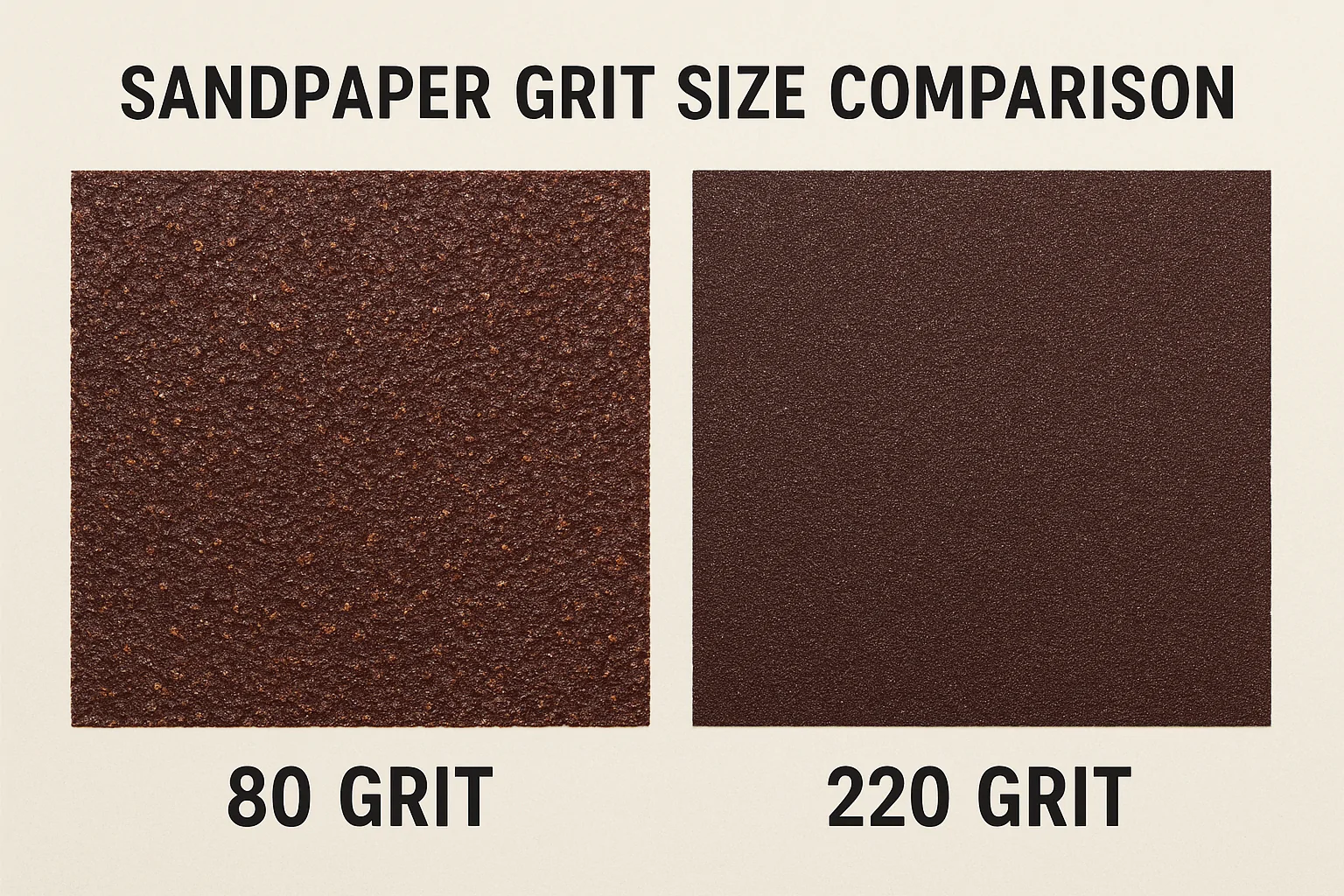
Visualizing different sandpaper grit sizes.
Think of grit as the "sharpness" or "aggressiveness" of the sandpaper. It tells you how much material the abrasive is designed to remove with each pass. A low grit number, like 40 or 60, means the particles are large and coarse – ideal for fast material removal or stripping finishes. A high grit number, like 320 or 600, means the particles are tiny and fine – designed for smoothing surfaces and preparing them for finishing. The higher the grit number, the smoother the finish it will produce, but it will remove material much more slowly. The term "mesh," when applied to sandpaper or sanding discs, refers specifically to the structure of the backing material. Instead of the abrasive grains being glued onto a solid sheet of paper or cloth, they are attached to a material that is essentially a grid or screen with open spaces. This mesh structure is what allows dust to pass through. So, you can have a 120 grit sandpaper (paper backing) and a 120 grit sanding mesh (mesh backing). Both have the same size abrasive particles and will initially cut with similar aggressiveness, but the mesh version will resist clogging better on dusty materials and provide superior dust extraction when paired with a vacuum system. They describe different characteristics: grit is about the abrasive grain size, while mesh describes the backing type and its dust-handling properties. NOVOGRIT produces abrasives in various grits on both paper and mesh backings.
Conclusion
The choice between paper and mesh sanding discs depends on your application. Mesh excels with dust collection and on materials that clog, while paper is a versatile standard for general tasks and fine finishing. Understanding abrasive grit and backing type helps select the best product for efficient, clean, and effective sanding.
You may also be interested in:

What is the difference between zirconium, ceramic, and aluminum oxide abrasives?
Choosing the right abrasive can be confusing. Using the wrong one wastes time, ruins your workpiece, and costs you money. Let’s make the choice simple for you. The main difference

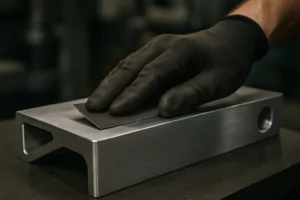
Best Sandpaper for Aluminum: NOVOGRIT's Guide to Flawless Finishes
What is the Best Type of Sandpaper to Use on Aluminum? Do you find yourself frustrated by sandpaper that gums up instantly when you try to smooth aluminum? It is
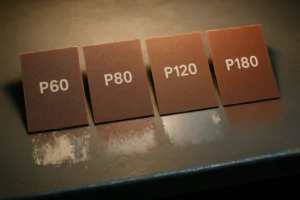
Best Sandpaper for Paint Removal: Grits, Types, & Tips | NOVOGRIT
What is the Best Sandpaper for Removing Paint? Are you tired of staring at chipped, peeling paint on your furniture, walls, or even your car? It's a common problem, and
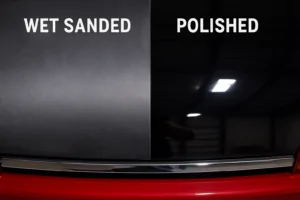
Automotive Wet Sanding: Supplies, Liquids & Best Sandpaper
Automotive Wet Sanding Supplies: What Do You Really Need? Wet sanding is a crucial technique in automotive refinishing, used to achieve a flawlessly smooth surface before painting or polishing. Unlike
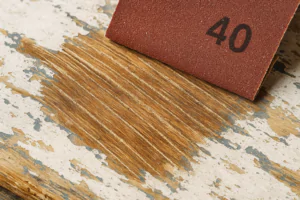
Best Sandpaper for Paint Removal & Grit Guide
What Is the Best Sandpaper for Removing Paint? Removing old paint can be a tedious job, but using the right sandpaper makes all the difference. It's not just about grit;
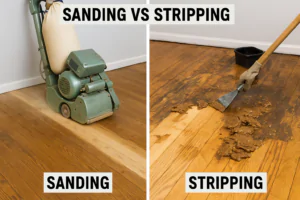
Hardwood Floor Sanding: Screen vs. Sandpaper & Best Practices
Sanding Screen vs. Sandpaper for Hardwood Floors: Which is Best? When you're tackling hardwood floor projects, choosing the right abrasive is crucial for achieving a smooth, professional finish. Both sanding
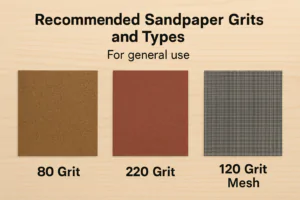
Paper Backing vs. Mesh Sanding Discs: Which Abrasive to Choose?
Paper Back vs. Mesh Sanding Discs: Which One Should You Pick? Choosing the right sanding disc backing can significantly impact your project's efficiency and finish quality. Paper-backed discs are a
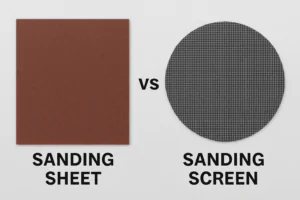
Sanding Mesh vs Paper: Which is More Economical and Better?
Is Sanding Mesh More Economical Than Sandpaper? Comparing Abrasive Costs When stocking up on abrasives, cost is always a factor. Paper sandpaper has traditionally been the standard, but newer mesh
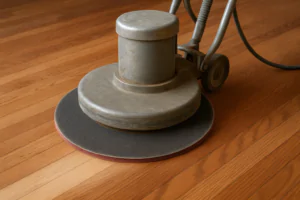
Sanding Nets & Screens Use Cases: When to Choose Mesh Abrasives
Sanding Nets and Screens: What Are Their Best Use Cases? When you encounter sanding nets or screens, you might wonder where they fit into your sanding projects. Unlike traditional solid-backed
